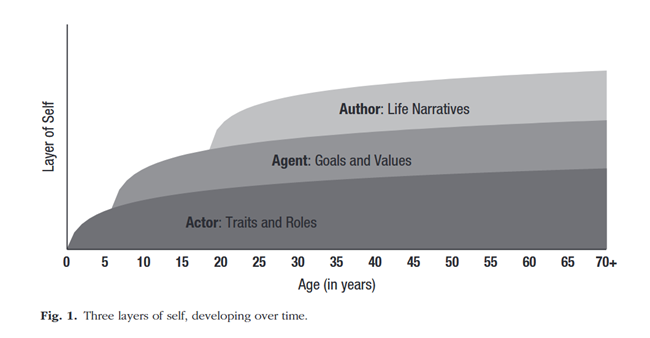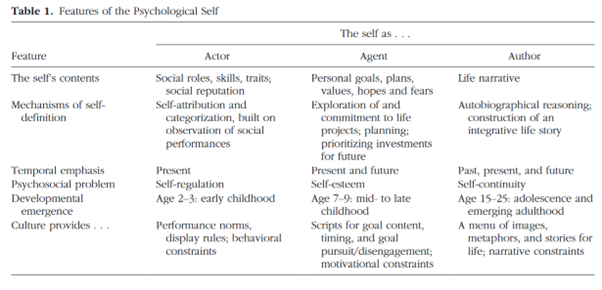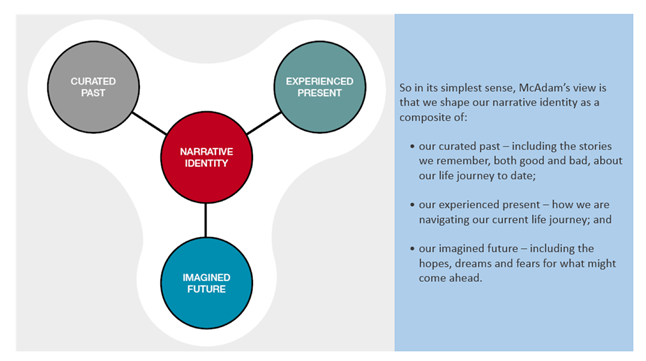Topic 1.1: Personality, style and preference – the things that make you “YOU”
Understanding ourselves, and our own style and preference, is an important first step for us in terms of building our self-confidence and the ability to manage and develop ourselves. But it’s also important to develop an accurate self-awareness so that we can appreciate how others experience us.
One thing that is important to note is that studying, describing and talking about personality is not about ‘pigeon-holing’ people, ‘labelling’ or ‘putting them in boxes’. As human beings we watch behaviours for cues about other people and how to engage with them; so we naturally develop stereotypes and assumptions about others. Using frameworks that seek to explain a range of naturally occurring behaviours is simply a more disciplined and informed way of managing this human proclivity and being able to describe those behaviours and emotions.
The Drucker reading (and/or video summary) in this module (‘Managing Oneself’) contains some great reminders and reinforcements about the value and importance of managing ourselves. Peter Drucker (1909 – 2005) was called “the man who invented management” by BusinessWeek and was one of the most influential leadership writers and organisational consultants of the 20th century. Although the original article was published more than 20 years ago and many aspects of organisational life and social norms have changed, many of his key perspectives on self management remain relevant today – including to our work in this unit.
A self-described “social ecologist,” Drucker explored the way human beings organise themselves and interact, in much the same way an ecologist would observe and analyse the biological world (The Drucker Institute). His thoughts about our personal responsibility for managing our lives and careers by understanding our strengths, our limitations and our values help us identify where we can make our best contributions. This is an article that needs to be read from a personal perspective, not simply as commentary about self-management in general.
Required Reading/Reflection
35 mins
Video Summary: One Percent Better. (2016, June 21). Managing Oneself by Peter Drucker: Animated Book Summary[Video]. Youtube. https://youtu.be/e5dvrqKCt6c.
- In the Drucker article / video summary, what are the ideas and principles that resonate most for you?
- What was most helpful for you? What do you feel most energy for? What is most challenging?
One of the ways we learn to better manage ourselves is to develop a keen awareness of our preferences and behaviours for things like:
- how comfortable we are asserting ourselves;
- how we prefer to take in and process information and make decisions;
- how we like to organise ourselves and the type of environment we feel most comfortable working in;
- how we prefer to interact with others.
These preferences not only influence our levels of satisfaction and stress, energy and confidence, clarity and emotions, but also how we interact with others every day. Not surprisingly, most personal or professional development programs incorporate some form of self-awareness into their curriculum. For this program, we will be using the DiSC Behavioural Profile to provide a “snapshot” of your preferences.
Required Activity
15 min
Preparation for workshop
During the workshop we will discuss behavioural and personality preferences, descriptors and differences. In preparation for the workshop please complete the DiSC Profile questionnaire. You will be sent the link in the first week of the unit.
The instrument asks you to respond to a range of questions that explore things about you such as:
- what motivates and drives you
- how you relate to others
- your work style
The profile report is primarily for your personal insight and response. We will also discuss the dimensions of the profile in the workshop and build upon the information the profile provides as you expand your learning
The Profile report will help you to identify and better understand some of these important aspects of your professional life; and the impact of your behaviour on others. It is important to remember that there are no right or wrong responses. The questionnaire is not a test. It is simply a tool for self-reflection that will provide you with a summary of your behavioural preferences at this point in time.
Please follow the link that has been emailed to you, read the instructions and complete the profile. If you have any questions, get in touch.
After you have completed the questionnaire you will be emailed a separate link so that you can access your report and a video explanation of the report contents. You should be able to use the information and the report feedback in developing your first assessment.
Of course, any instrument can only provide a ‘snapshot’ or outline of who a person is and how they like to operate in a given situation. Dan McAdams has provided a helpful framework for thinking about personality. In his book the Art and Science of Personality Development (2015), he argues that “personality presents the mature man or woman as an ever-developing social actor, motivated agent, and autobiographical author – a whole person expressed in a trinity of guises, moving across situations, over developmental time, and through culture” (p8). That is, we are more than just a collection of scientifically identified traits. Our traits describe ways we may typically act, but we also learn to act in ways that support our goals and values, and ultimately, we script and live and tell ourselves a story about our own lives. “to know yourself in full, then, is to know (and know how to live with) your traits, your goals and values, and your stories” (p8). The table below expands this a little more.


Recommended Reading
15 mins
You can read more about McAdams’ description of the art and science of personality development in this article:
Using yourself as an example, consider some of what we might call the “hardwired” traits you have. Perhaps you are a naturally outgoing person, or maybe you are more reserved. Perhaps you are naturally drawn to detail, or maybe you are more comfortable with the big picture and generalities. Perhaps you are a very time-conscious person, or maybe you are more flexible about your approach to time.
These are some typical traits people display fairly consistently. (Of course, we all learn how to adapt, but there are approaches that remain more natural and comfortable to us.)
These traits tend to be fairly consistent over time. But as McAdam observes, they don’t tell the whole story about us, do they? That’s because stuff happens to us in our lives that shapes the ways we understand the world, other people, and ourselves. Significant life-shaping events and experiences like our family life, culture, socio-economic circumstances, education, travel, illness, and loss – to name a few – can have long-lasting effects on the ways in which we behave, interact and contribute.
And finally, there is the personal narrative we develop over time. “I’m an optimist … I’m a realist … I’m resilient … I love challenges … I’m adaptable … I’m innovative … I’m someone others can rely on … I’m a voice of reason …”. These stories both reflect and shape the ways in which we live and how others experience us.
McAdams (2008, p.244) explains the “life stories” aspect as follows:
“Stories do many things: They entertain, educate, inspire, motivate, conceal and reveal, organize and disrupt. Among their most important functions however is integration (Habermas & Bluck, 2000; McAdams, 2001). Stories often bring together into an understandable frame disparate ideas, characters, happenings and other elements of life that were previously set apart. Psychologically speaking, life stories may provide integration in two ways (McAdams, 1985). First, people’s stories about themselves may bring together different self-ascribed tendencies, roles, goals, and remembered events into a synchronic pattern that expresses how the individual person, who seems to encompass so many different things in a complex social world, is, at the same time, one (complex and even contradictory) thing as well.
A life story may explain, for example, how a person who describes herself as “gentle” and “caring” and who claims to avoid conflict in her personal life manages still to be a successful litigator for her law firm. Second, people’s stories provide diachronic integration, that is, in time. They provide causal accounts regarding how a person moved from A to B to C in life, showing, for example how a rebellious teenager at age 20 became a respectable stakeholder in society by the time he was 35; or how a successful 60 year old entrepreneur believes he evolved, step by step, from an impoverished childhood to his current state of affluence.
The formulation of an integrative narrative identity is an especially salient challenge for individuals living in modern societies, who seek personal integration within an ever-changing, contradictory, and multi-faceted social world that offers no clear guidelines, no consensus on how to live and what life means (McAdams, 1991, Giddens, 1991).”

Required Reflection
20 min
- What influence have “characteristic adaptations” had?
- Think of specific influences that have significantly shaped the way you think about, feel and respond to things.
- How about the story you tell yourself about yourself?
- Summarise your story and come up with a “headline” that captures it.
- Record these observations in your journal.

